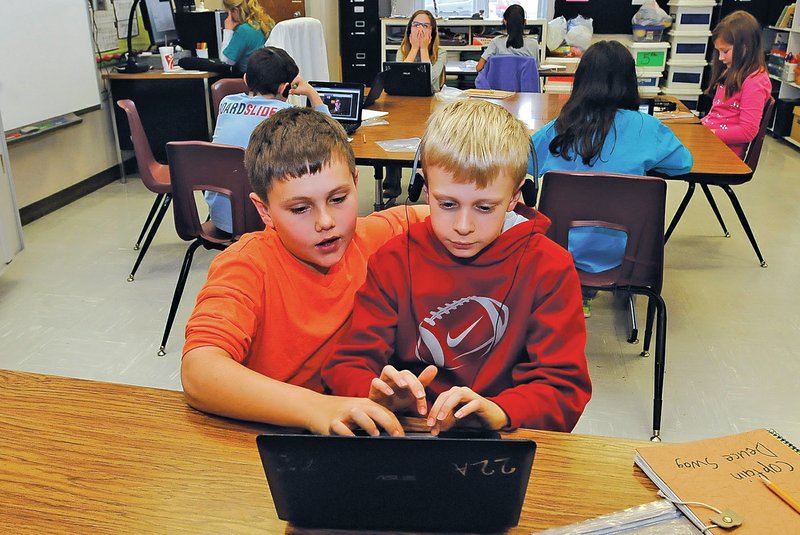A dozen fourth-graders at Reagan Elementary School in Rogers sat at tables last week, silently and intensely engaged in activities on their laptop computers.
Upon first glance at their screens, a casual observer might have thought they were just playing games. These students, however, actually were getting lessons in computer programming.
What is Code.org?
http://code.org">Code.org is a nonprofit organization dedicated to expanding participation in computer science by making it available in more schools, and increasing participation by woman and underrepresented students of color. The organization is supported by a large coalition of partners that includes Microsoft, Apple, Amazon.com, Boys and Girls Clubs of America and the College Board.
Source: http://code.org">Code.org
They were among those participating in last week's Hour of Code, an effort to introduce people across the globe to computer science and the basics of computer coding. Code.org offers free tutorials in computer programming geared mainly toward children.
Those tutorials were what the Reagan Elementary fourth-graders, part of the school's gifted and talented program called REACH, were doing Thursday.
Vera Pelphrey, 9, was working on navigating a zombie character through a maze by lining up "blocks" of code in the correct sequence. Each block contained an instruction telling the character exactly which way to turn or move.
"It's actually really entertaining," Vera said.
Upon arranging the code, Vera pressed the "run" button to see if it worked. The tutorial then provided feedback based on the result and passed her to a slightly more complicated task if she succeeded.
Christie Price, a REACH facilitator, said the Code.org tutorials teach the students how to think.
"This is about problem solving, following directions and doing something that interests them," Price said.
More than 73 million people had participated in Hour of Code as of Friday afternoon, according to Code.org. The activity was promoted last week to celebrate Computer Science Education Week.
Participants included all the students at Fayetteville's Happy Hollow Elementary School. Matt Patitz, an assistant professor of computer science and computer engineering, rounded up about 70 undergraduate and graduate students from the university to help out with Hour of Code activities at the school Tuesday. It was the second year he'd done it.
"Kids really think they're playing a game, but they do learn how to write code, breaking a problem down into an algorithm," Patitz said.
The University of Arkansas has nearly 100 percent job placement rate for its computer science graduates, Patitz said. There is a growing demand for graduates from that field.
"A lot of big companies are having trouble getting enough programmers and enough talent. So I think that's part of the reason for this Code.org initiative," Patitz said.
April Cartee, a sixth grade science teacher at Bentonville's Barker Middle School, gave her students time in class on Tuesday to explore the Code.org tutorials. She wanted them to learn the importance of problem solving, logic and creativity.
"I thought it was beautifully organized," Cartee said. "It was incredibly user-friendly. It's very to the point. There's not a lot of searching and trying to find where you need to be."
Cartee was pleased to see her students enjoy the activities.
"They came in the next day and asked, 'Are we doing coding again?'" Cartee said.
The coding spirit spread to the high school level as well. Jeff Anderson, a computer science teacher for Rogers High School and Heritage High School, asked his students to spread the word about Code.org. He gave them an optional assignment of getting at least one student or family member to visit the website and complete one of the tutorials.
"As proof the students must send me a picture of this session in action -- a selfie with their student and the program they wrote in the background," Anderson wrote in an email.
NW News on 12/15/2014

